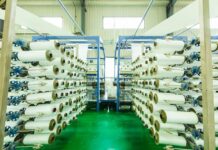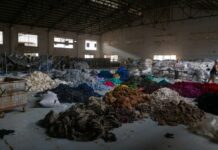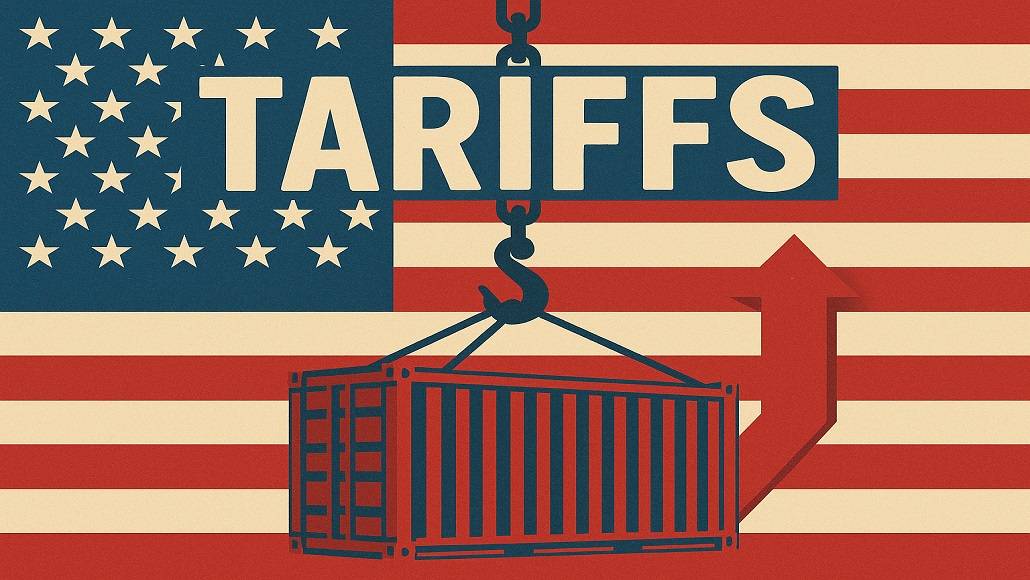The Indian textile sector is facing a crisis as the administration of U.S. President Donald Trump has instituted an additional 25 percent tariff on Indian goods, raising the total tariff on certain products to over 50 percent. Announced on Wednesday, this action is a direct repercussion of India’s ongoing imports of Russian oil. While the initial 25 percent tariff has already been implemented, the new rate will take effect on August 27.
The repercussions are being felt throughout the industry almost immediately. American retailers are reportedly engaging in discussions with Indian exporters to assess their next steps, with many buyers instructing suppliers to halt shipments and avoid placing new orders.
The textile and garment sectors, particularly in key hubs like Tirupur, Coimbatore, and Karur, which collectively employ over 1.25 million individuals and export about ₹45,000 crore worth of garments annually, are particularly hard-hit.
Exporters in Tirupur, often referred to as India’s “knitwear capital,” are already signaling a drop in orders, with many being paused, redirected, or completely lost to competitors in nations such as Bangladesh, Pakistan, Vietnam, and Cambodia, which benefit from considerably lower U.S. tariffs ranging from 19 percent to 36 percent. One exporter reported that a typical shipment to the U.S. had been sent to Pakistan instead, while another was instructed to “hold on” to a summer order.
The newly imposed duties, which could elevate effective rates for certain knitted garments to as high as 64 percent, have prompted some exporters to label the situation as a “de facto trade embargo.” This dramatic increase positions Indian products to be up to 35 percent costlier than those from competing countries. K. M. Subramanian, president of the Tiruppur Exporters’ Association (TEA), discussed the financial challenges, stating, “Our margins are just 5 percent to 7 percent; how can we share this cost?”
The timing of these tariffs is particularly detrimental, as the textile belt in Tamil Nadu had just started to recover in terms of U.S. orders. Following the signing of the India–UK Free Trade Agreement and increased interest from the U.S. due to tariffs on China, exporters had invested in new machinery. However, this optimism has now turned into despair. Analysts predict a potential 40-50 percent decline in orders bound for the U.S., especially in cotton and knitted apparel.
Furthermore, the adverse effects extend beyond ready-made garments. In Coimbatore and Karur, known for their home textiles, orders are also stalling. K. Selvaraju, secretary general of the Southern India Mills’ Association, indicated that buyers are postponing summer bookings for items such as bed linens and towels. He also noted that the new tariffs exacerbate existing challenges, including an 11 percent import duty on cotton and a GST duty structure that adds an extra 6-7 percent to export costs, further diminishing competitiveness.
Industry leaders warn that if the situation remains unresolved, the crisis could lead to the loss of 100,000 to 200,000 jobs in the region over the coming months. While larger brands might remain due to India’s social compliance and operational standards, Subramanian cautioned that the industry “will still bleed for some time.”
The new tariffs pose a serious threat to India’s competitive position. For instance, knitted apparel could face tariffs as high as 64 percent, with woven apparel facing a 60.3 percent duty, putting Indian manufacturers at a significant disadvantage compared to countries like Vietnam and Bangladesh, where tariffs are only 20 percent. This discrepancy has raised concerns among analysts that U.S. orders could shift to these lower-tariff nations.
Indian textile firms are now under pressure and exploring alternatives. Gokaldas Exports, which serves clients such as GAP, Walmart, and JCPenney, has reported that brands are discussing the possibility of utilizing the company’s production capacity in regions with lower tariffs. Management has observed that pricing power is “subdued,” which is pressuring profit margins.
The stakes are indeed high, as the U.S. is the largest market for Indian textiles and apparel, representing 28 percent of total exports in FY25, a market valued at $36.61 billion. From January to May, the U.S. imported $4.59 billion worth of textiles and apparel from India, reflecting a 13 percent increase from the previous year. Currently, India occupies a 5.8 percent share of the U.S. garment market, trailing behind China, Vietnam, and Bangladesh.



































